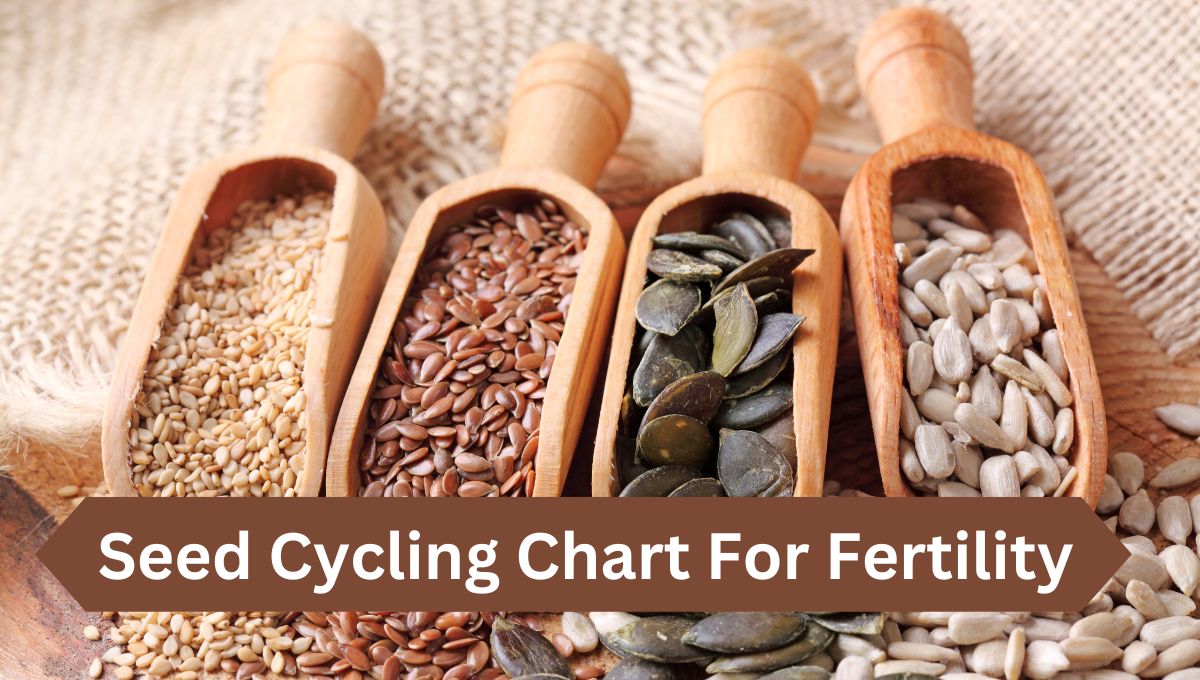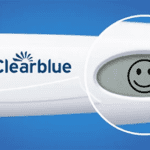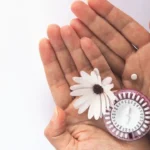
Seed cycling is a natural way to help balance hormones and support fertility through strategic consumption of specific seeds during different phases of the menstrual cycle. The basic premise is that certain seeds contain beneficial nutrients that can help regulate estrogen and progesterone. By eating flax, pumpkin, sunflower, and sesame seeds at certain times of the month, you may be able to optimize your hormone levels.
The goal of seed cycling chart for fertility is to consume seeds containing lignans during the follicular phase, and seeds containing vitamins E and B6 during the luteal phase. Lignans from flax and pumpkin seeds can bind to excess estrogen receptors when estrogen levels are at their peak, while the nutrients in sesame and sunflower seeds help support progesterone production in the luteal phase.
Many women follow seed cycling to help regulate their cycles, decrease PMS symptoms, and boost fertility. By helping to bring hormones into balance, seed cycling aims to create an optimal environment for conception. The diet modifications are easy to follow and incorporate into your normal routine. While more research is still needed, many women report excellent results and hormonal harmony from adopting a seed cycling schedule.
Related: Tips to Prepare Your Body for Pregnancy
How Does Seed Cycling Work?
Seed cycling is a natural way to support hormone balance in the body by eating specific seeds at different times during the menstrual cycle. The idea is to consume seeds that are rich in compounds that help promote or reduce certain hormones depending on the phase of your cycle.
The menstrual cycle has two main phases – the follicular phase and the luteal phase. The follicular phase starts on the first day of your period and lasts until ovulation. During this time, estrogen levels begin to rise to help mature and release an egg. The luteal phase begins after ovulation and lasts until the start of your next period. Progesterone peaks during this phase to prepare the uterus for potential implantation.
Seed cycling works by consuming seeds that help boost estrogen during the follicular phase, and seeds that increase progesterone in the luteal phase.
Follicular Phase (1 to 14 days): Flax, pumpkin, and sesame seeds help promote estrogen production. These seeds contain lignans that can bind to estrogen receptors and help increase estrogen levels.
Luteal Phase (15 to 28 days): Sunflower and chia seeds help increase progesterone levels. They are rich in nutrients like vitamin E, zinc, and essential fatty acids that support progesterone.
Timing is important when seed cycling. You want to consume the follicular boosting seeds from menstruation until ovulation, and then switch to the luteal boosting seeds until your next period starts. This helps promote the natural rise and fall of estrogen and progesterone.
By supporting hormonal balance with seed nutrition, the goal of seed cycling is to create optimal conditions for fertility. Natural hormone regulation is thought to improve conditions for ovulation, regular menstrual cycles, and implantation.
Related: How to Prepare for Pregnancy After 40?
Seed Cycling for Follicular Phase
The first half of your menstrual cycle, known as the follicular phase, typically lasts from day 1 of your period until ovulation. This is when estrogen levels begin to rise and an egg develops and matures in preparation for ovulation.
The best seeds to eat during the follicular phase are flax and pumpkin seeds. These contain lignans that can mimic estrogen in the body and help promote ovulation. Some key benefits of seed cycling during the follicular phase include:
- Promoting regular ovulation
- Increasing cervical mucus production
- Improving egg quality
- Balancing out low estrogen levels
Here’s a sample meal plan for the follicular phase:
Breakfast: Oatmeal with 1 Tbsp ground flaxseed, walnuts, and berries
Snack: Pumpkin seeds and carrot sticks
Lunch: Mixed greens salad with chickpeas, pumpkin seeds, avocado
Snack: Apple with 1 Tbsp peanut or almond butter
Dinner: Salmon, brown rice, and roasted Brussels sprouts
Evening: Chamomile tea with 1 Tbsp ground flaxseed
The lignans in flax and pumpkin seeds can help promote healthy estrogen levels in the body during the follicular phase. Aim for 1-2 Tbsp of freshly ground flaxseed and pumpkin seeds daily. Combine with a balanced diet and healthy lifestyle for optimal fertility benefits.
Related: Can You Take Mucinex To Get Pregnant?
Seed Cycling Chart for Fertility for Luteal Phase

The luteal phase falls in the second half of your menstrual cycle after ovulation. This phase is marked by increased progesterone levels which help build and sustain a thick uterine lining in preparation for pregnancy.
During the luteal phase, it’s recommended to consume more estrogen-promoting seeds like sesame, pumpkin, sunflower, and flax. These seeds help balance your hormones and counteract the effects of excess progesterone.
Best Seeds for the Luteal Phase
- Sesame seeds are rich in lignans that help bind excess estrogen and remove it from the body. Consume 1-2 tablespoons of sesame seeds per day.
- Pumpkin seeds are high in zinc which is important for progesterone and testosterone balance. Aim for 1-2 tablespoons of pumpkin seeds daily.
- Sunflower seeds contain fiber, vitamin E, selenium, and other nutrients that support hormone balance. Eat 1-2 tablespoons of sunflower seeds each day.
- Flax seeds are high in lignans and omega-3 fatty acids. Consume 1 tablespoon of flax meal or ground flax daily.
Luteal Phase Seed Cycling Benefits
Consuming estrogen-promoting seeds during the luteal phase can:
- Increase progesterone levels to build the uterine lining
- Counteract estrogen dominance side effects like bloating or heavy periods
- Support ovulation and regular menstrual cycles
- Balance hormones for optimal fertility
- Reduce PMS symptoms like breast tenderness, acne, and mood swings
Sample Luteal Phase Meal Plan
Here’s what a daily meal plan might look like during the luteal phase while seed cycling:
- Breakfast: Oatmeal with 1 Tbsp pumpkin seeds, 1 Tbsp sunflower seeds, cinnamon, and berries
- Lunch: Lentil soup with 1 Tbsp sesame seeds and salad with 2 Tbsp pumpkin seeds
- Snack: 1 Tbsp ground flax on yogurt with fruit
- Dinner: Veggie stir fry with 1 Tbsp sesame seeds over brown rice
Be sure to rotate the seeds and vary your intake to get a range of nutrients. Seeds can easily be added to salads, yogurts, oatmeal, smoothies, baked goods, and more.
Related: BBT Chart Pregnant vs Not Pregnant?
Getting Started with Seed Cycling
Getting started with seed cycling is easy with just a little preparation and planning. Here are some tips to integrate it into your diet:
- Stock up on the recommended seeds for each phase – pumpkin, sunflower, flax and sesame. You’ll need about 1-2 tablespoons per day. Buy raw, unsalted seeds.
- Add seeds to things you already eat like yogurt, oatmeal, salads, smoothies and baked goods. Get creative! Toasting brings out more flavor.
- Mix seeds together or take them separately at any point during the day. Consistency is key.
- Use supplements if you can’t get enough seeds in your diet. Ground flax and sesame seeds are easy options.
- Track your seed intake. Use a journal or app to remember what seeds you’ve eaten each day.
- Prepare seed packages or mixes for convenience if desired.
- Inform partners, family and friends so they can support your seed cycling habit.
- Stay motivated by remembering your fertility goals. Consider joining an online community for inspiration.
- Adjust for travel or holidays – bring small bags of seeds or take supplements.
Sticking to seed cycling may be challenging at first. Creating a routine, planning meals and snacks, and tracking intake will help it become a natural part of your daily diet. Be patient with yourself as you adopt this new lifestyle practice – the fertility benefits will make it worthwhile!
#Seed Cycling Diet Recommendations
The dietary component is an important part of making seed cycling effective. It’s recommended to focus on eating fertility-boosting foods during each phase of the cycle.
##Follicular Phase Diet
During the follicular phase, focus on eating foods that are:
- High in good fats like avocados, nuts, seeds, extra virgin olive oil, salmon
- High fiber like fruits, vegetables, whole grains
- Low glycemic index foods like beans, lentils, chickpeas
Avoid or limit:
- Refined carbs and sugars
- Caffeine and alcohol
- Dairy
- Factory farmed meats
Eating in this way supports estrogen production and follicle development.
##Luteal Phase Diet
During the luteal phase, focus on eating foods that are:
- High in zinc like pumpkin seeds, grass-fed beef, spinach
- Vitamin B6 foods like grass-fed beef, pistachios, tuna, spinach
- Magnesium rich foods like dark leafy greens, avocados, nuts, seeds
- Vitamin E foods like almonds, spinach, avocados
Avoid or limit:
- Inflammatory foods like processed foods, sugar, saturated fats
- Alcohol and caffeine
This diet pattern helps support progesterone levels and promote implantation.
Overall, eat a fertility focused diet of whole, unprocessed foods in each phase. Stay hydrated, exercise moderately, and reduce stress levels. This, along with seed cycling, can help improve hormonal balance.
Related: Unbelievable! You Can Get Pregnant with Tubes Tied
Lifestyle Factors that Support Seed Cycling
In addition to following the seed cycling protocol, there are several lifestyle factors that can also support hormone balance and fertility.
Exercise
Getting regular exercise is important for reducing stress, supporting circulation, maintaining a healthy weight, and balancing hormones.Aim for 30-60 minutes of moderate exercise like walking, jogging, cycling, swimming, or yoga most days of the week. Be sure not to overdo high intensity workouts, as too much can disrupt hormones.
Stress Management
High levels of stress can significantly impact hormone balance and fertility. Practice stress management techniques like meditation, deep breathing, journaling, or talking with a friend. Consider adding relaxing activities like taking a warm bath, sipping herbal tea, reading, or listening to music. Reduce sources of stress when possible and don’t be afraid to say no to obligations.
Sleep
Prioritize getting 7-9 hours of quality sleep per night, as lack of sleep can disrupt hormone production. Maintain a consistent sleep schedule, limit blue light exposure in the evenings, avoid caffeine in the afternoon, and create an optimal sleep environment. Melatonin supplements can also help with sleep.
Other Lifestyle Factors
- Avoid smoking, excessive alcohol, and recreational drugs, as these can impair fertility.
- Eat a balanced, nutritious diet focused on whole foods.
- Reduce exposure to toxins in foods, products, and the environment when possible.
- Consider acupuncture, massage, or other complementary therapies to support overall wellbeing.
Making positive lifestyle changes along with seed cycling may help maximize results for hormone balance and fertility.
Evidence for Seed Cycling and Fertility
While seed cycling is growing in popularity as a natural way to support healthy hormonal balance, there is still limited evidence on its efficacy for fertility specifically. Most of the support for seed cycling is based on anecdotal evidence from women who have experienced positive results. However, there have been a few small studies that provide some initial scientific backing:
- A 2016 study followed 178 women undergoing IVF treatment. Half the women incorporated seed cycling, while the other half did not. The seed cycling group was found to have improved progesterone levels in the luteal phase compared to the control group. The seed cycling group also demonstrated higher clinical pregnancy and live birth rates.
- A pilot study in 2018 followed 32 women with irregular menstrual cycles who seed cycled for three months. At the end of the study, 75% of the women reported more regular menstrual cycles and reduced PMS symptoms. Blood tests also revealed improved estrogen and progesterone levels.
- A small 2019 study had 12 women with polycystic ovarian syndrome (PCOS) follow a seed cycling protocol for two consecutive menstrual cycles. The results showed improved cycle regularity, reduced ovarian cysts, and better hormone balance. 10 out of 12 women ovulated compared to only 3 out of 12 prior to the study.
While promising, larger scale clinical studies are still needed to validate and expand on these early findings. Most experts conclude that seed cycling shows potential to support female fertility but should not replace medical treatment when fertility issues or hormonal imbalances are present. Seed cycling is relatively low risk and may help optimize normal hormonal function alongside a healthy diet, lifestyle and medical care.
Seed Cycling vs. Other Fertility Supplements
Seed cycling is a natural and gentle way to support your menstrual cycle and fertility. It does not provide the same level of control or precision as other fertility treatments, but also comes with fewer side effects. Here’s how seed cycling compares to other common fertility supplements:
- Ovulation predictor kits – These test your urine to predict when you will ovulate. They pinpoint your fertile window more precisely than seed cycling alone. However, seed cycling over multiple months can help regulate your cycle for more predictable ovulation.
- Fertility medications – Drugs like Clomid and Femara stimulate ovulation in women with irregular cycles. This approach is more targeted and rapid, but can cause side effects like mood swings, hot flashes, and multiple births. Seed cycling is slower but safer for long-term use.
- Progesterone supplements – These help lengthen the luteal phase and correct low progesterone after ovulation. Seed cycling also supports progesterone levels naturally through nutrients like vitamin E.
- Herbal supplements – Some herbal blends claim to boost fertility. However, they lack evidence on safety and efficacy. Seed cycling has more historical use and scientific backing.
- IVF and IUI – For severe fertility issues, procedures like IVF and IUI are used. Seed cycling alone is unlikely to help such cases. But it provides a first step before invasive treatments.
So in summary, seed cycling gives a moderate fertility boost for mild issues, without the side effects of drugs. It can be used as an adjunct to other treatments or on its own for cycle regulation. Those with severe infertility may need stronger interventions. Discuss options with your doctor to choose the right path.
Who is Seed Cycling Good For?
Seed cycling may be beneficial for women experiencing irregular menstrual cycles, hormonal imbalances, or difficulty getting pregnant. The gentle hormone regulation provided by seed cycling can help restore balance and improve fertility odds.
Women with conditions like PCOS, endometriosis, or estrogen dominance may find seed cycling helps manage symptoms. Underlying issues should still be addressed, but seed cycling can provide hormonal support.
Seed cycling is generally safe for most women to try. However, there are some cases where it may not be advised:
- Women with hormone-sensitive conditions like breast cancer, uterine cancer or ovarian cancer should avoid seed cycling without medical approval.
- Anyone on hormone medications like birth control pills, hormone replacement therapy, or fertility drugs should exercise caution with seed cycling due to possible interactions.
- Pregnant and breastfeeding women have naturally fluctuating hormones and likely do not need the hormone regulation from seed cycling.
- Those with digestion issues, food sensitivities, or allergies to seeds should avoid or modify the seed cycling protocol.
- Teenagers who have not begun ovulating regularly may not yet be good candidates for seed cycling.
Boost Fertility Naturally with This Seed Cycling Kit

Conclusion
As with any new supplement routine, it’s best to consult your physician before beginning seed cycling — especially if you have any underlying medical conditions. While seed cycling is gentle, it does aim to regulate hormones so proper precautions are advised.
Frequently Asked Questions (FAQs)
Does seed cycling help get pregnant?
Seed cycling may support fertility by helping to regulate hormones and balance the menstrual cycle. It is not a guarantee for pregnancy but can be used as a natural method to potentially enhance fertility when combined with other lifestyle practices.
Which seed is best for ovulation?
Sunflower and sesame seeds are recommended during the luteal phase, including ovulation, to support the body’s progesterone production.
How quickly does seed cycling work?
It may take 3-4 months of consistent seed cycling to potentially experience its benefits for hormone balance and fertility.
Is seed cycling 14 days?
Seed cycling spans the entire menstrual cycle, with the follicular phase (first half) lasting around 14 days and the luteal phase (second half) also around 14 days. Specific seeds are consumed during each phase.












